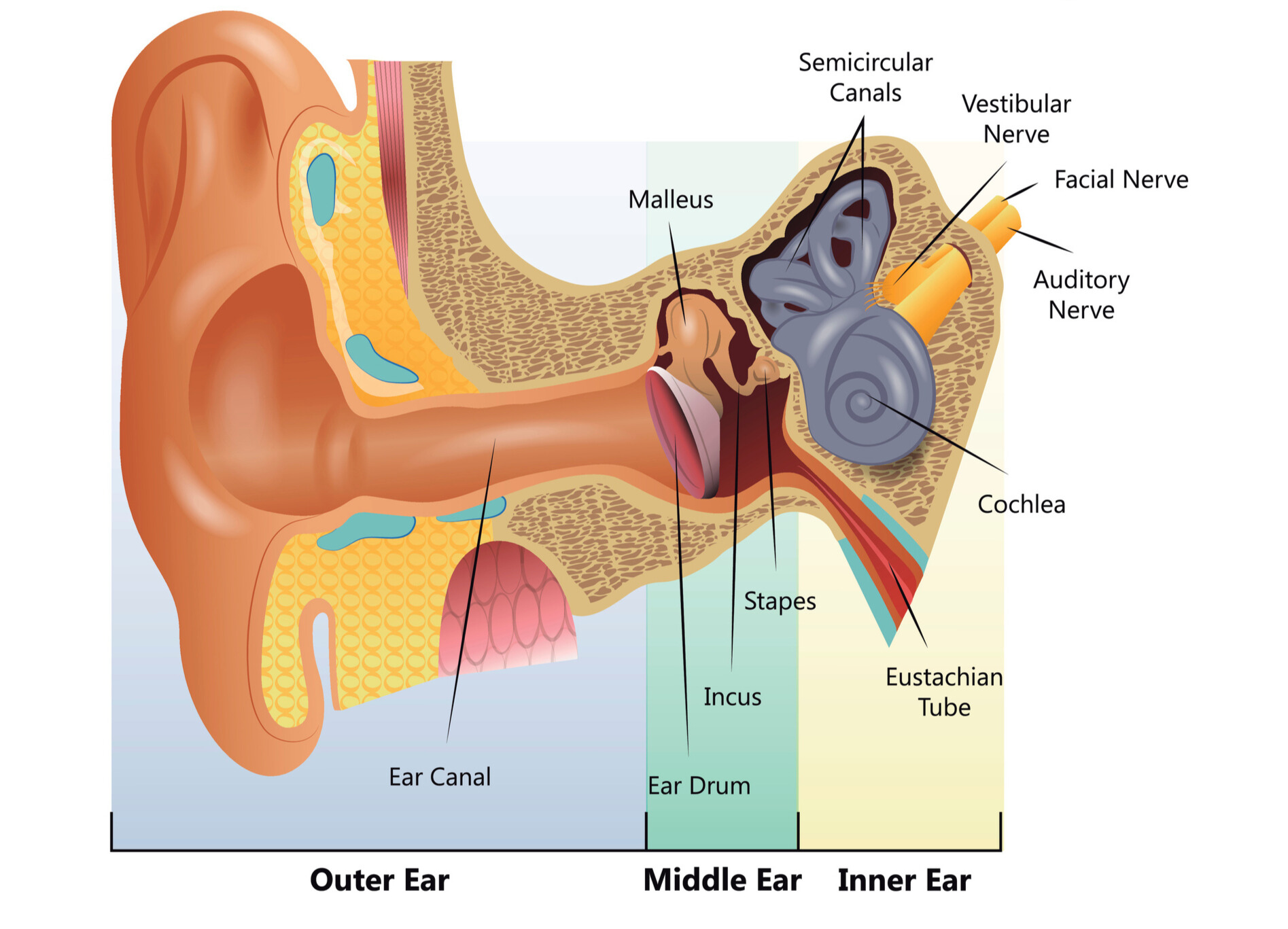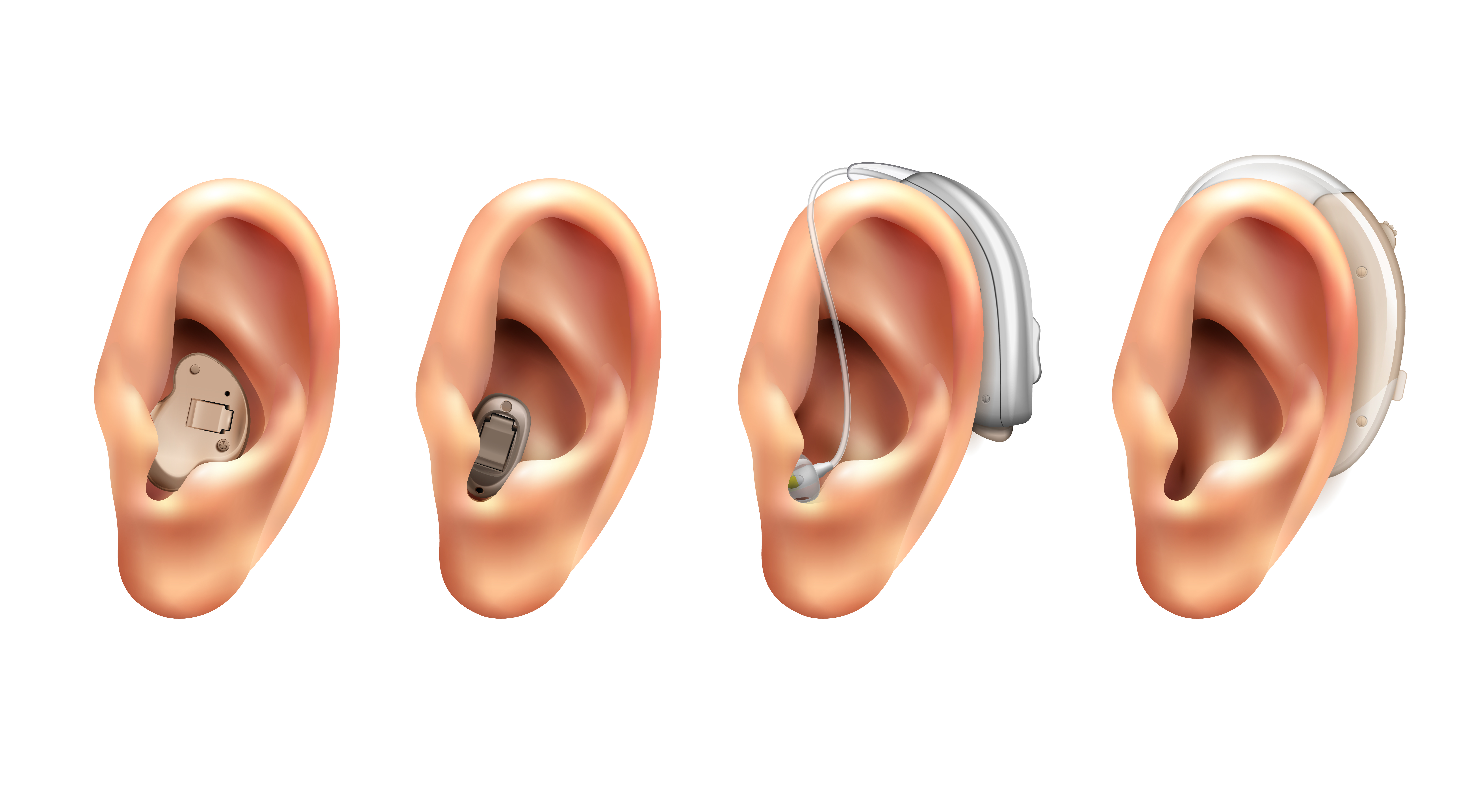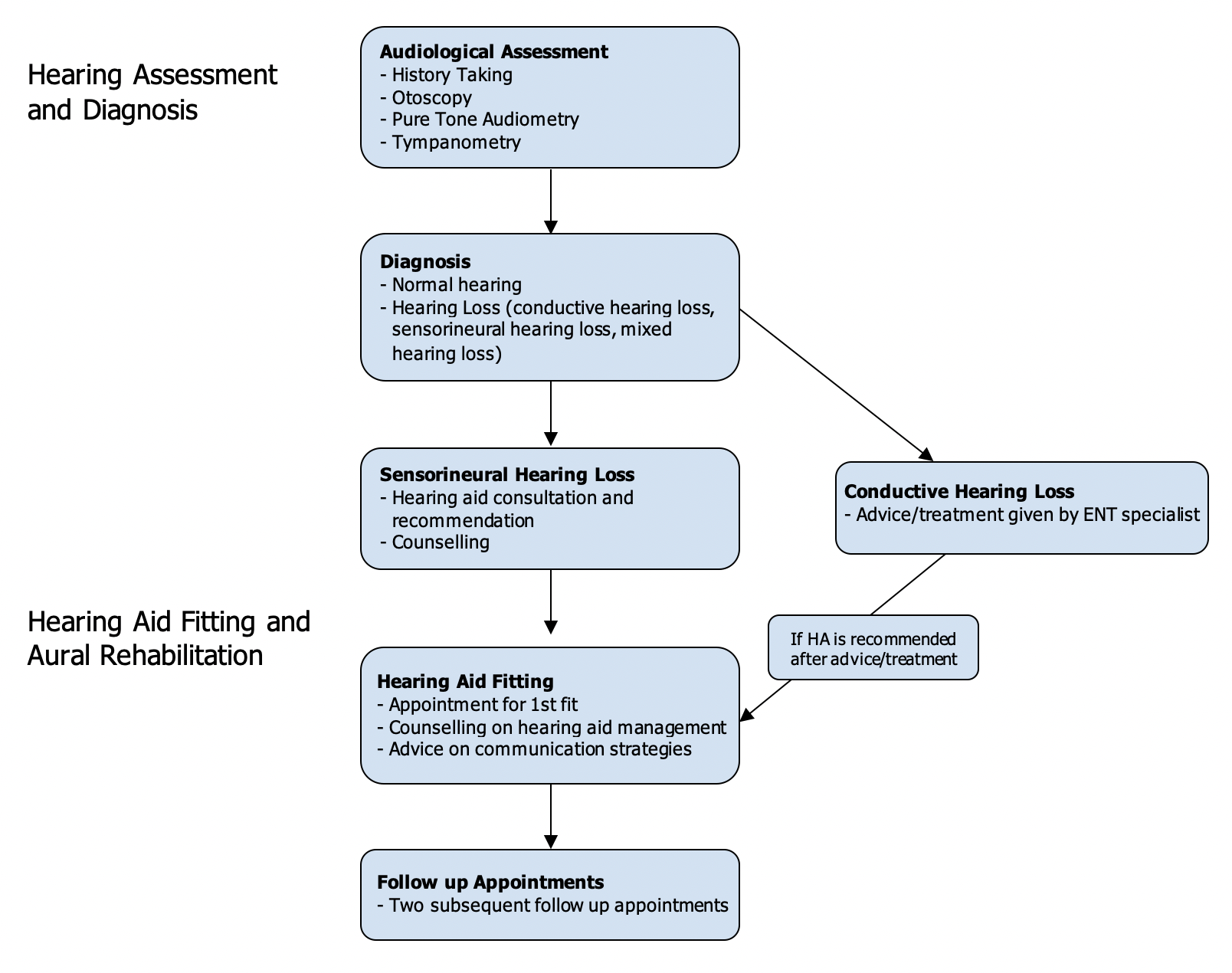Hearing and Tinnitus Assessments for Adults
How we hear
When we hear, sound travels along the ear canal and vibrates the eardrum (outer ear). The vibration causes movement of the three bones located in the middle ear. These bones move against the hearing organ (cochlear) and pass the vibrations to special hair cells within it (inner ear). The hair cells send electrical signals along the nerves to the brain, where we then perceive the sound.

Types of Hearing Loss
Hearing loss can be categorised into three different types:
Sensorineural Hearing Loss (SNHL): This type is caused by a loss of sensitivity of the cochlea or the hearing nerves. It can result from ageing, exposure to loud noise, infections, or diseases like Meniere's diseases. The resulting loss is usually permanent.
Conductive Hearing Loss (CHL): This type is caused by problems in the outer or middle ear and can often be rectified with medical or surgical treatment. Common causes include ear infections, fluid build-up, perforated eardrums, ear trauma or diseases like otosclerosis.
Mixed Hearing Loss: This type of loss is a combination of both sensorineural and conductive hearing losses. It may be caused by a single disorder or a combination of separate problems in the inner and middle/outer ear.
Degree of Hearing
Hearing loss can be categorised into five degrees based on the severity:
Normal: Individuals can communicate easily in most situations.
Mild: Individuals may struggle in noisy environments, hearing at a distance, or when the speaker is not facing them. Hearing devices may be helpful for those with mild hearing loss.
Moderate and Moderately Severe: Individuals may have difficulties hearing on the phone, watching television and hearing in noisy environments. Hearing devices will usually improve communication for such individuals.
Severe and Profound: Those with severe and profound hearing loss face great difficulty in communication across all environments. Hearing devices would be required for such individuals to improve communication.
Hearing Loss Symptoms
Recognising the signs of hearing loss is crucial for early intervention.
Common signs include:
- Perceiving others to be speaking unclearly, especially when the speaker is not facing you
- Having difficulties hearing on the phone
- Frequently requesting others to repeat their words
- Finding it hard to hear in group gatherings or in noisy settings
- Turning up the television at a volume much louder than others
Hearing Aids
A hearing aid is a small electric device designed to aid individuals with hearing loss by amplifying sounds.
There are four main types of hearing aids:
- Invisible-In-The-Canal (IIC)/ Completely-In-The-Canal (CIC)
- In-The-Ear (ITE)/ In-The-Canal (ITC)
- Behind-The-Ear (BTE)
- Receiver-In-The-Canal (RIC)/ Receiver-In-The-Ear (RITE)

Image by macrovector on Freepik.
At Gleneagles, our audiologists will recommend the type of hearing aids based on clients’ needs and suitability.
Hearing Aid and Rehabilitation Service at Gleneagles


What is Tinnitus?
Tinnitus is the perception of internal sounds within the ears or head in the absence of any external source. These sounds are often described as ringing, buzzing, or other various forms. According to the World Health Organization, approximately 278 million people worldwide are affected by tinnitus. It is a common experience that would usually last for only a short time.
On the other hand, chronic tinnitus, which lasts for more than six months affects almost 5% of the population. For these individuals, it can lead to distress, disruption in sleep and concentration, reducing a person’s quality of life.
Type of Tinnitus
Subjective tinnitus: the most common type of tinnitus characterised by sounds perceived solely by the affected individual. Common descriptions of subjective tinnitus include ringing, hissing, and high-pitched tones.
Objective tinnitus: a rarer condition in which the sounds perceived by the affected individual can also be heard or detected by the examiner and others.
What causes Tinnitus?
Tinnitus, not a disease itself, is often a sign of damage within the hearing system or the brain (subjective tinnitus). Common triggers include age-related hearing loss, trauma, or exposure to loud noise, prompting the brain to generate noise to compensate for reduced sound signals. In some instances, it may result from ear infections, excess earwax, or medication side effects.
On the other hand, objective tinnitus often results from specific physical abnormalities in the body, such as vascular or muscular issues. It requires medical evaluation to identify and address the underlying causes.
Tinnitus Management
A comprehensive approach typically starts with the ENT specialist conducting a physical examination to identify any underlying medical causes. Additionally, a hearing test is performed to assess if the auditory system is connected to the underlying issue. Depending on the case, other healthcare professionals may be enlisted to assist in diagnosis and management.
The aim of tinnitus management is to achieve habituation. Habituation is a term used to describe the process of reducing the perception and impact of tinnitus on a person's life. It involves training the brain to ignore the sound of tinnitus and treat it as a non-threatening signal, similar to the way the brain processes background noise.
Typically, this requires an integrated approach involving sound therapy, counselling as well as relaxation strategies and amplification if required. Through this service, individuals can gain a deeper comprehension of their condition and better management of their reaction towards tinnitus.





